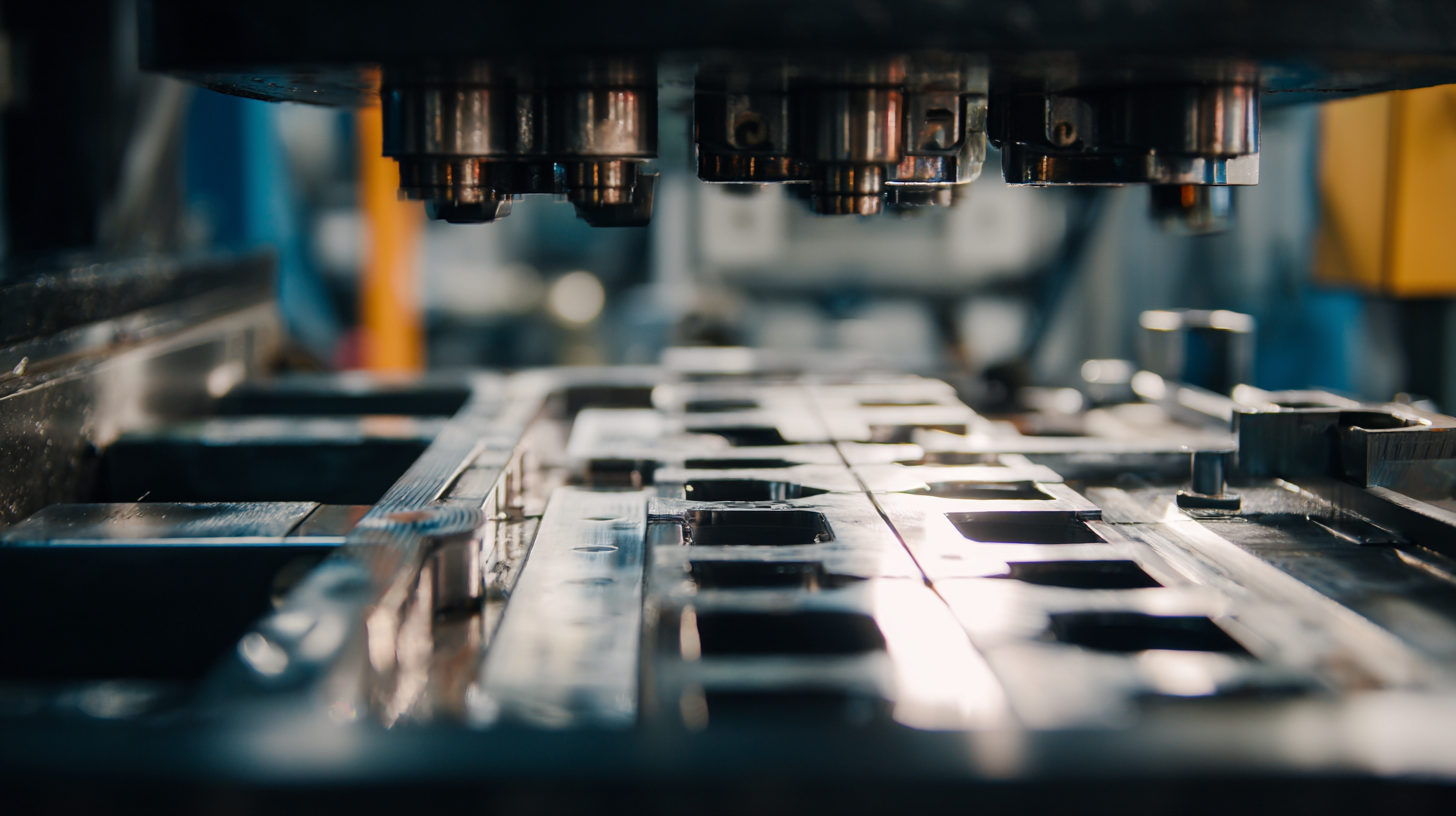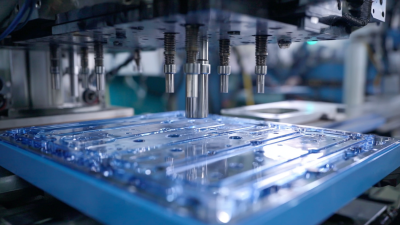In the rapidly evolving landscape of manufacturing, compression molding emerges as a pivotal process that promises not only efficiency but also innovation. As industries strive for sustainable practices and reduced waste, the significance of compression molding is becoming increasingly evident. According to Dr. Emily Carter, a leading expert in polymer processing, “Compression molding is not just a technique; it's a transformative approach that optimizes material utilization and enhances production speed.” This perspective highlights the growing recognition of compression molding as a future cornerstone in advanced manufacturing.

With its ability to accommodate complex shapes and reduce cycle times, compression molding is positioned to be among the top five manufacturing processes by 2025. Industry leaders are beginning to embrace this technology, recognizing its potential to streamline operations while maintaining high levels of quality and precision. As businesses seek to refine their processes and reduce costs, the focus on compression molding may very well reshape the competitive landscape of manufacturing in the coming years.
As we delve deeper into the reasons why compression molding is the future of efficient manufacturing processes, it becomes clear that its benefits extend beyond mere production efficiency; it embodies a strategic shift towards more sustainable and intelligent manufacturing practices.
Compression molding is a manufacturing process that involves molding materials, usually thermosetting plastics or rubber, by applying heat and pressure. The process begins with placing a pre-measured amount of raw material, known as a charge, into an open mold cavity. As the mold closes, heat activates the material, causing it to flow and fill the mold completely. The application of pressure ensures the material achieves a uniform thickness and eliminates any air bubbles, leading to a high-quality finished product.
The advantages of compression molding are numerous and significant. Firstly, it is a cost-effective method for mass production, as it reduces material waste and minimizes cycle times. Additionally, this process allows for the use of complex molds, enabling the creation of intricate designs that meet specific industry needs. Compression molding also produces strong, durable parts that can withstand high temperatures and harsh conditions, making it ideal for automotive and aerospace applications. Furthermore, the ability to mold large components in a single piece greatly enhances structural integrity, positioning compression molding as a forward-looking solution in efficient manufacturing processes.
Compression molding has emerged as a pivotal manufacturing process that caters to various key industries, driving innovation and efficiency. Notably, the automotive sector is witnessing significant advancements through the use of compression molding technology. This method allows for the production of lightweight components, such as composite liftgates and elastomers, which are essential in meeting stringent fuel efficiency standards and reducing overall vehicle weight. As the automotive elastomers market is projected to surge to USD 48.3 billion by 2033, the integration of advanced molding techniques is likely to play a crucial role in this growth.
Another noteworthy area benefiting from compression molding is the bio-based plastic industry. With the global bio-based polycarbonate market anticipated to grow significantly by 2034, compression molding offers an eco-friendly approach to producing sustainable materials. This aligns with the increasing demand for environmentally responsible manufacturing processes, further emphasized by the expanding scope of materials like carbon fiber reinforced thermoplastics. As industries evolve, the efficiency and versatility of compression molding present unique opportunities for innovation in manufacturing, ensuring it remains a cornerstone in the future of production technologies across multiple sectors.

Compression molding stands out in the realm of manufacturing processes, especially when cost-effectiveness and sustainability come into play. By utilizing heat and pressure to mold materials, this technique allows manufacturers to create complex shapes with minimal waste. The efficient use of raw materials significantly reduces production costs, making compression molding an attractive option for companies looking to optimize their operations without compromising on quality.
Moreover, the sustainable aspect of compression molding cannot be overlooked. This method often employs recyclable and eco-friendly materials, thereby minimizing environmental impact. As consumers increasingly prioritize sustainability, businesses that adopt compression molding can enhance their reputation and appeal to a more environmentally conscious market. The combination of lower operational costs and reduced environmental footprint positions compression molding as a forward-thinking choice for manufacturers aiming to innovate while remaining economically viable and socially responsible.
| Aspect | Value |
|---|---|
| Cost per Component | $1.50 |
| Production Time per Unit | 30 seconds |
| Material Waste | 5% |
| Energy Consumption per Batch | 200 kWh |
| Recyclability of Materials | 80% |
| Lead Time for Production | 1 week |
| Typical Component Size | 4 inches |
| Applications | Automotive, Consumer Goods, Electronics |
Recent advancements in materials technology are pivotal for the evolution of compression molding, particularly highlighted by breakthroughs like MR-MUF's heat control innovations. This new packaging technology enhances heat dissipation in chips, paving the way for improved performance in electronic applications. According to industry reports, effective heat management is crucial in maintaining the longevity and efficiency of semiconductor devices, with thermoplastics increasingly favored for their thermal properties and lightweight characteristics.

Moreover, the rise of carbon fiber reinforced thermoplastics (CFRTs) signifies a notable shift in manufacturing materials, contributing to increased efficiency and sustainability. Research indicates that CFRTs offer superior strength-to-weight ratios and can be tailored for various applications, which aligns perfectly with the evolving demands of both traditional and advanced manufacturing processes. As companies focus on integrating digital intelligence into production, the interplay between innovative materials and advanced processing techniques stands to redefine industry standards, ensuring that future manufacturing remains both efficient and eco-friendly.
The adoption of compression molding processes presents several challenges that manufacturers need to navigate. One of the primary obstacles is the initial investment costs associated with advanced compression molding machinery. According to a 2022 report by MarketsandMarkets, while the global compression molding market is projected to reach $7.6 billion by 2026, many small to medium enterprises struggle with the capital requirements for upgrading their equipment. This financial barrier can hinder the competitive edge of these companies, particularly against competitors that have already transitioned to more efficient processes.
Moreover, operational challenges, such as the need for skilled labor and precise material handling, can complicate implementation. A study by TechNavio indicates that improper handling of materials can lead to increased waste and reduced product quality, compromising the efficiency advantages that compression molding typically offers.
Manufacturers must invest in training and robust quality control systems to mitigate these risks effectively. By addressing these challenges with innovative solutions, such as modular machinery and automation, the transition toward compression molding can be smoother, ultimately leading to improved productivity and sustainability in manufacturing processes.






